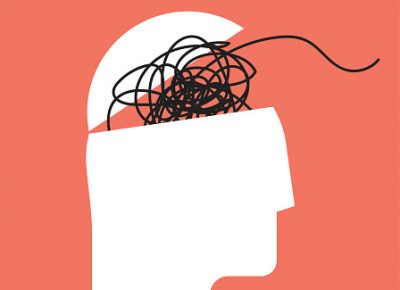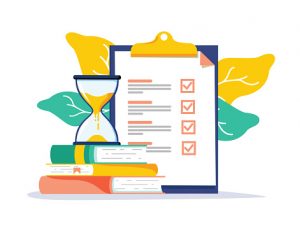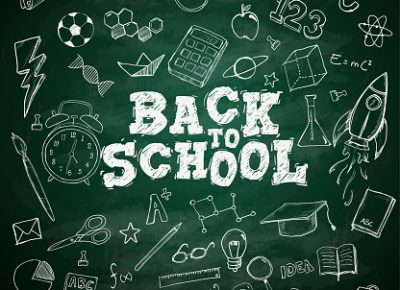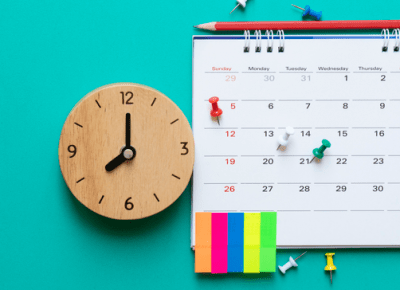Author Archives: vlm
What is NVLD and Are You Getting the Correct Help?

What is NVLD?
Are You Getting the Correct Help?
Watch My Video Below >>>
What is a Non-Verbal Learning Disorder? What is the WRONG and RIGHT Kind of Help?Learn about What is the RIGHT and WRONG kind of Help!
Posted by ADDvantages Learning Center on Wednesday, December 4, 2019
It Takes One to Know One!
 As the old saying goes, check out the super short 50 second video to learn how that applies to YOU!
Linda Karanzalis HAS ADHD and knows how to help your child!
As the old saying goes, check out the super short 50 second video to learn how that applies to YOU!
Linda Karanzalis HAS ADHD and knows how to help your child!
 Linda Karanzalis, MS
Linda Karanzalis, MS
Linda Karanzalis, MS, is a former special education classroom teacher with over 25 years of experience in the areas of learning disabilities, ADHD, social-emotional learning, social skills training, and behavior management
Why Do You get Pushback Behavior from Your Child?
 What causes your child give pushback when you ask something of them? Children of all ages with different brain wiring (ADHD, NVLD, social-emotional difficulties, often struggle with problem solving and changes. Does your child ‘dig in his heels’ to resist new changes? Poor executive functioning skills cause difficulties understanding and comprehending new incoming information.
For these kids, unexpected changes often cause resistance and can lead to meltdowns. Looking at something from a different point of view, coming up with new solutions to cope with novel situations, and taking feedback from others are part of problem-solving. Getting stuck on one way of doing something can look like stubbornness and defiance when it’s really about the inability to cope with the unexpected ‘curve balls’ of daily life. Calvin, one of my students only wanted to eat Lucky Charms for breakfast, but when his mom (one of my parents coaching clients) attempted to switch to a healthier brand it was if his entire world fell apart.
What causes your child give pushback when you ask something of them? Children of all ages with different brain wiring (ADHD, NVLD, social-emotional difficulties, often struggle with problem solving and changes. Does your child ‘dig in his heels’ to resist new changes? Poor executive functioning skills cause difficulties understanding and comprehending new incoming information.
For these kids, unexpected changes often cause resistance and can lead to meltdowns. Looking at something from a different point of view, coming up with new solutions to cope with novel situations, and taking feedback from others are part of problem-solving. Getting stuck on one way of doing something can look like stubbornness and defiance when it’s really about the inability to cope with the unexpected ‘curve balls’ of daily life. Calvin, one of my students only wanted to eat Lucky Charms for breakfast, but when his mom (one of my parents coaching clients) attempted to switch to a healthier brand it was if his entire world fell apart.
 He kept saying over and over again, ‘I want Lucky Charms!’ It’s important to note here Calvin doesn’t have any sensory issues related to food. For the average person this seems quite unreasonable and willful. When encountering ‘pushback’ from your child, as hard as it is, it’s really important to stay in control of your emotions.
Despite the intensity of ‘pushback’ it’s important to remain empathetic and reinforce that you know how difficult this can be for your child. Ideally changes need to be prepared for in advance before the change actually happens. For instance, when Calvin’s mom introduced the new cereal by having him try a small portion, dry from the box this helped him to eventually make the change.
Building on strengths is another helpful tactic. Calvin and his mom used a special timer that he used to help him prepare for transitions. When his mom set the timer (giving him a visual cue) to let him know in 15 minutes, he would be trying the new cereal, he was better able to self-regulate his emotions.
He kept saying over and over again, ‘I want Lucky Charms!’ It’s important to note here Calvin doesn’t have any sensory issues related to food. For the average person this seems quite unreasonable and willful. When encountering ‘pushback’ from your child, as hard as it is, it’s really important to stay in control of your emotions.
Despite the intensity of ‘pushback’ it’s important to remain empathetic and reinforce that you know how difficult this can be for your child. Ideally changes need to be prepared for in advance before the change actually happens. For instance, when Calvin’s mom introduced the new cereal by having him try a small portion, dry from the box this helped him to eventually make the change.
Building on strengths is another helpful tactic. Calvin and his mom used a special timer that he used to help him prepare for transitions. When his mom set the timer (giving him a visual cue) to let him know in 15 minutes, he would be trying the new cereal, he was better able to self-regulate his emotions.
Cognitive Inflexibility, Rigid Thinking and Executive Function
Pushback is Not Always a Behavior Problem however, these strategies are good, but they are not enough to actually make changes in the cognitive processing skills system. Efficient cognitive processing skills (foundational skills of executive functioning) enable one to not only manage and adjust to changes, but are necessary for fast and frustration free learning. See what parents are saying of how their children have been helped here.I’ve Struggled with ADHD too!
I know firsthand what’s it’s like to struggle with ADHD. All of the programs I use have helped me to not only exceed my goals, but to create new ones! Take my Brain Quiz and receive a complimentary 30 -minute session to go over the results to see if you or your child could benefit from my assistance towards developing these skills. There is hope and help! Linda Karanzalis, MS
Linda Karanzalis, MS
Linda Karanzalis, MS, is a former special education classroom teacher with over 25 years of experience in the areas of learning disabilities, ADHD, social-emotional learning, social skills training, and behavior management
Adjusting to life with ADHD
 Let’s look at adjusting to life with ADHD. Overcoming ADHD to live a productive life is something every parent wants for their child with an ADHD diagnosis, however adjusting to life with ADHD is typically the answer. Finding lost keys in the refrigerator, running out of gas, spending an hour looking for my phone and once again coming home to discover dinner will not be served because I forgot to turn on the crockpot, are just some of my recent mishaps. All of this in addition to the work and personal responsibilities of the daily grind is stressful and mentally exhausting. No one knows what it’s like behind closed doors because I and many others with ADHD do a such a good of ‘masking’ to fit in with those around us. The downside is we can only hold it in for so long before our so called ‘mess-ups’ become apparent to others.
Let’s look at adjusting to life with ADHD. Overcoming ADHD to live a productive life is something every parent wants for their child with an ADHD diagnosis, however adjusting to life with ADHD is typically the answer. Finding lost keys in the refrigerator, running out of gas, spending an hour looking for my phone and once again coming home to discover dinner will not be served because I forgot to turn on the crockpot, are just some of my recent mishaps. All of this in addition to the work and personal responsibilities of the daily grind is stressful and mentally exhausting. No one knows what it’s like behind closed doors because I and many others with ADHD do a such a good of ‘masking’ to fit in with those around us. The downside is we can only hold it in for so long before our so called ‘mess-ups’ become apparent to others.
Adjusting to work and social life with ADHD
 Unfortunately, people on the outside of the ADHD culture are not as forgiving as those of us on the inside. They can be harsh with their feedback, when through no fault of our own, due the wiring of our brains, we don’t meet up to their standards. That is getting the same result but going about it a different way. There is no one way to do something, just as there are many routes to the same destination. Somehow in our society we are expected to conform to a set of unwritten rules that leaves those with ADHD open to judgement.
However unconventional our methods may be, they work for us. Many of my adult clients say the self-hate is torturous, ruminating thoughts telling them they’re lazy, incompetent, self-centered, plus some other things that can’t be put in writing!
Well-meaning ‘neurotypical’ friends tell them they are scattered, need to meditate, focus, use strategies, and to just do one thing at a time, as if they hadn’t tried those things already! There is a false belief strategies are remedies to eliminate the symptoms of ADHD or change the wiring of the brain. Although I’m successful, have higher degrees in education, am well-spoken and have received accolades for my work, I still feel like I’m an imposter! I quite frequently need to remind myself I don’t have a character defect. I have a legitimate diagnosed disorder, just like one has heart disease or diabetes.
Unfortunately, people on the outside of the ADHD culture are not as forgiving as those of us on the inside. They can be harsh with their feedback, when through no fault of our own, due the wiring of our brains, we don’t meet up to their standards. That is getting the same result but going about it a different way. There is no one way to do something, just as there are many routes to the same destination. Somehow in our society we are expected to conform to a set of unwritten rules that leaves those with ADHD open to judgement.
However unconventional our methods may be, they work for us. Many of my adult clients say the self-hate is torturous, ruminating thoughts telling them they’re lazy, incompetent, self-centered, plus some other things that can’t be put in writing!
Well-meaning ‘neurotypical’ friends tell them they are scattered, need to meditate, focus, use strategies, and to just do one thing at a time, as if they hadn’t tried those things already! There is a false belief strategies are remedies to eliminate the symptoms of ADHD or change the wiring of the brain. Although I’m successful, have higher degrees in education, am well-spoken and have received accolades for my work, I still feel like I’m an imposter! I quite frequently need to remind myself I don’t have a character defect. I have a legitimate diagnosed disorder, just like one has heart disease or diabetes.
How I am adjusting to life with ADHD
 So how did I turn lemons into lemonade? I did my research and found a better way. I now share my success with others and provide students of all ages with help and programs that do work. No, they are not just strategies, as mentioned above. Although strategies help, they are not good enough!
All of the programs I provide are based on the latest scientific research and I have personally completed them myself. Not only have I experienced relief, I have been able to not just survive, but to thrive. I have exceeded my goals and am constantly creating new ones. But, the greatest reward of all is seeing the success of others!
Take my Brain Quiz and receive a complimentary 30- minute session to go over your results. You or your child too can experience success, just like the hundreds of students I help over the past 20 years!
So how did I turn lemons into lemonade? I did my research and found a better way. I now share my success with others and provide students of all ages with help and programs that do work. No, they are not just strategies, as mentioned above. Although strategies help, they are not good enough!
All of the programs I provide are based on the latest scientific research and I have personally completed them myself. Not only have I experienced relief, I have been able to not just survive, but to thrive. I have exceeded my goals and am constantly creating new ones. But, the greatest reward of all is seeing the success of others!
Take my Brain Quiz and receive a complimentary 30- minute session to go over your results. You or your child too can experience success, just like the hundreds of students I help over the past 20 years!
 Linda Karanzalis, MS
Linda Karanzalis, MS
Linda Karanzalis, MS, is a former special education classroom teacher with over 25 years of experience in the areas of learning disabilities, ADHD, social-emotional learning, social skills training, and behavior management
ADHD vs NVLD or Non-Verbal Learning Disorder
 What is NVLD (Non-VerbaI Learning Disorder) and how does it compare to an ADHD diagnosis? I didn ’t know I had ADHD until I taught my first special education class, more than 20 years ago. Not much was known about the condition back then, but thanks to the mother of one of my students, who was a college professor, I learned about it. I finally had an answer to my questions.
As time went by, I realized that not all of my struggles were caused by ADHD. Why was I so naïve, gullible,
and awkward, bumping into things and people? Why couldn’t I read maps or get jokes? Why did I have trouble riding a bike, unlocking doors, and walking in a straight line?
Most troubling of all, why wasn’t I able to understand the meaning behind other people’s words? People
became annoyed with me as I asked the same questions over and over, in different ways, attempting to decipher what they meant.
It baffled me. I knew I was smart, I graduated with honors, and I was well-spoken and well versed in many things. Finally, in my late 30s, my struggles were explained. I was diagnosed with NVLD (non-verbal learning disorder), a brain-based condition characterized by difficulty recognizing and processing verbal cues, poor visual, spatial, and organizational skills, and poor motor performance.
What is NVLD (Non-VerbaI Learning Disorder) and how does it compare to an ADHD diagnosis? I didn ’t know I had ADHD until I taught my first special education class, more than 20 years ago. Not much was known about the condition back then, but thanks to the mother of one of my students, who was a college professor, I learned about it. I finally had an answer to my questions.
As time went by, I realized that not all of my struggles were caused by ADHD. Why was I so naïve, gullible,
and awkward, bumping into things and people? Why couldn’t I read maps or get jokes? Why did I have trouble riding a bike, unlocking doors, and walking in a straight line?
Most troubling of all, why wasn’t I able to understand the meaning behind other people’s words? People
became annoyed with me as I asked the same questions over and over, in different ways, attempting to decipher what they meant.
It baffled me. I knew I was smart, I graduated with honors, and I was well-spoken and well versed in many things. Finally, in my late 30s, my struggles were explained. I was diagnosed with NVLD (non-verbal learning disorder), a brain-based condition characterized by difficulty recognizing and processing verbal cues, poor visual, spatial, and organizational skills, and poor motor performance.
Confusion Between ADHD and NVLD
 Why did it take so long to get diagnosed? ADHD and NVLD are both brain-based conditions, but each has
different causes. What makes it hard to distinguish between them is their overlapping symptoms. ADHD is recognized in the Statistical Manual of Mental Disorders (DSM); NVLD is not.
In addition, NVLD doesn’t present the same symptoms from one child to the next, and its symptoms may change across the lifespan. NVLD is often mistaken for ADHD, and, as a result, is misunderstood and under-diagnosed. Adding to the confusion is the name “non-verbal learning disorder,” which suggests that those with NVLD do not speak. Ninety-three percent of communication is non-verbal—body language, facial expressions, tone of voice. Those with NVLD have trouble interpreting this non-verbal language, relying exclusively on the seven percent of communication that is verbal to understand what others are saying.
Why did it take so long to get diagnosed? ADHD and NVLD are both brain-based conditions, but each has
different causes. What makes it hard to distinguish between them is their overlapping symptoms. ADHD is recognized in the Statistical Manual of Mental Disorders (DSM); NVLD is not.
In addition, NVLD doesn’t present the same symptoms from one child to the next, and its symptoms may change across the lifespan. NVLD is often mistaken for ADHD, and, as a result, is misunderstood and under-diagnosed. Adding to the confusion is the name “non-verbal learning disorder,” which suggests that those with NVLD do not speak. Ninety-three percent of communication is non-verbal—body language, facial expressions, tone of voice. Those with NVLD have trouble interpreting this non-verbal language, relying exclusively on the seven percent of communication that is verbal to understand what others are saying.
What Is NVLD (Non-Verbal Learning Disorder) ?
 Children and adults with NVLD are typically affected in all or some of the following areas: motor skills (coordination), visual-spatial (discrimination of differences of objects, visualization of images, determining one’s location of body in space), academics (particularly math), social-emotional learning (reading facial expressions, body language, literal interpretation of language), and executive functions (processing skills).
Individuals with NVLD rely heavily on verbal expression when communicating with others, often talking excessively to confirm what the other person means. One of the telltale signs of NVLD is saying, “That’s not what you said.” A child or adult with NVLD will hold you to every word you say. You may even feel that you’re being interrogated, so choose your words wisely. Those with NVLD argue with others a lot, insisting that what is expected of them is not what they were told.
NVLD and anxiety go hand in hand, because of the inability to understand and connect with parents, teachers, peers, and acquaintances. In fact, the symptom that is common among students I have worked with is a high level of anxiety. Many students become school-phobic, and adults with NVLD have trouble communicating with coworkers and the boss.
Unable to understand the agenda of others, those with NVLD are often vulnerable, gullible, and easily led as children and adults. As a young adult, before I knew I had NVLD, I thought a person selling me his car wanted to be my friend. My dad told me otherwise. Mistaking NVLD for ADHD If a clinician mistakes NVLD for ADHD, the patient is placed on ADHD medication, which does nothing for NVLD symptoms. Putting someone through the trials of medication, and enduring side effects, is unnecessary and may lead to other complications. Getting the right diagnosis and receiving early intervention to support your child is
imperative.
The NVLD Project, a non-profit organization, is working hard to do that. They recognize the need for multiple perspectives to determine an accurate definition of the disorder. They are currently funding scientific research to support the preparation of a proposal to include NVLD in the DSM.
If you suspect that you or your child has NVLD, consult a neuropsychologist who is familiar with NVLD, ADHD, spectrum disorders (there is overlap with high functioning autism), and learning disabilities. An evaluation should include a patient’s speech and language development, verbal IQ, performance IQ, visual spatial skills, and motor development. A patient’s score on any one of these individual tests doesn’t matter much by itself. The specialist will be looking to see whether the patient’s overall strengths and weaknesses match the most common patterns seen in patients with NVLD. Many of my students were misdiagnosed with oppositional defiant disorder when they didn’t understand social interactions.
Children and adults with NVLD are typically affected in all or some of the following areas: motor skills (coordination), visual-spatial (discrimination of differences of objects, visualization of images, determining one’s location of body in space), academics (particularly math), social-emotional learning (reading facial expressions, body language, literal interpretation of language), and executive functions (processing skills).
Individuals with NVLD rely heavily on verbal expression when communicating with others, often talking excessively to confirm what the other person means. One of the telltale signs of NVLD is saying, “That’s not what you said.” A child or adult with NVLD will hold you to every word you say. You may even feel that you’re being interrogated, so choose your words wisely. Those with NVLD argue with others a lot, insisting that what is expected of them is not what they were told.
NVLD and anxiety go hand in hand, because of the inability to understand and connect with parents, teachers, peers, and acquaintances. In fact, the symptom that is common among students I have worked with is a high level of anxiety. Many students become school-phobic, and adults with NVLD have trouble communicating with coworkers and the boss.
Unable to understand the agenda of others, those with NVLD are often vulnerable, gullible, and easily led as children and adults. As a young adult, before I knew I had NVLD, I thought a person selling me his car wanted to be my friend. My dad told me otherwise. Mistaking NVLD for ADHD If a clinician mistakes NVLD for ADHD, the patient is placed on ADHD medication, which does nothing for NVLD symptoms. Putting someone through the trials of medication, and enduring side effects, is unnecessary and may lead to other complications. Getting the right diagnosis and receiving early intervention to support your child is
imperative.
The NVLD Project, a non-profit organization, is working hard to do that. They recognize the need for multiple perspectives to determine an accurate definition of the disorder. They are currently funding scientific research to support the preparation of a proposal to include NVLD in the DSM.
If you suspect that you or your child has NVLD, consult a neuropsychologist who is familiar with NVLD, ADHD, spectrum disorders (there is overlap with high functioning autism), and learning disabilities. An evaluation should include a patient’s speech and language development, verbal IQ, performance IQ, visual spatial skills, and motor development. A patient’s score on any one of these individual tests doesn’t matter much by itself. The specialist will be looking to see whether the patient’s overall strengths and weaknesses match the most common patterns seen in patients with NVLD. Many of my students were misdiagnosed with oppositional defiant disorder when they didn’t understand social interactions.
What Can You Do to Help Yourself or Your Child?
 There is no standard treatment approach for NVLD, since so little is known about the condition. As with ADHD, education about NVLD is key for all who work with your child. Physical and occupational therapy, social skills (reading body language, learning social protocols), and executive function skills training (to develop deficient processing skills) are all important to help children manage NVLD symptoms.
Parents need support to identify and understand their child’s behaviors. Talk therapy has its place in a treatment regimen, but it doesn’t teach parents, children, or adults the skills to manage moment-to moment situations at home, school, or work.
Behavioral parent training (BPT) gives parents the tools to better meet their child’s daily needs. Dialectical
behavioral therapy (DBT) can be effective for some individuals. Adults with NVLD and ADHD need help as well. Adults who have been diagnosed with both conditions usually have years of struggles. Many marriages suffer. Spouses feel the stress of trying to pick up all the loose ends and provide daily support. When Charlotte, one of my clients, was diagnosed, her husband realized she wasn’t being difficult, or forgetting things on purpose, or being lazy. Her behaviors weren’t due to a character flaw, attitude, or a personality problem.
Once they both knew it was a neurological disorder, they were able to put her behaviors in perspective, and their relationship improved dramatically.
There is no standard treatment approach for NVLD, since so little is known about the condition. As with ADHD, education about NVLD is key for all who work with your child. Physical and occupational therapy, social skills (reading body language, learning social protocols), and executive function skills training (to develop deficient processing skills) are all important to help children manage NVLD symptoms.
Parents need support to identify and understand their child’s behaviors. Talk therapy has its place in a treatment regimen, but it doesn’t teach parents, children, or adults the skills to manage moment-to moment situations at home, school, or work.
Behavioral parent training (BPT) gives parents the tools to better meet their child’s daily needs. Dialectical
behavioral therapy (DBT) can be effective for some individuals. Adults with NVLD and ADHD need help as well. Adults who have been diagnosed with both conditions usually have years of struggles. Many marriages suffer. Spouses feel the stress of trying to pick up all the loose ends and provide daily support. When Charlotte, one of my clients, was diagnosed, her husband realized she wasn’t being difficult, or forgetting things on purpose, or being lazy. Her behaviors weren’t due to a character flaw, attitude, or a personality problem.
Once they both knew it was a neurological disorder, they were able to put her behaviors in perspective, and their relationship improved dramatically.
 Linda Karanzalis, MS
Linda Karanzalis, MS
Linda Karanzalis, MS, is a former special education classroom teacher with over 25 years of experience in the areas of learning disabilities, ADHD, social-emotional learning, social skills training, and behavior management
Originally Published in ADDitudes magazine Winter Edition 2019
Links Between Gluten and ADHD
 Let’s explore the connections between gluten and ADHD. Did you know a study done in 2006 a study was published about a group of celiac disease sufferers who were tested for ADHD symptoms while on a gluten diet? After 6 months of living on a gluten- free diet researchers discovered their symptoms of ADHD had dramatically reduced.
Scroll Down for a Video on this Topic
Let’s explore the connections between gluten and ADHD. Did you know a study done in 2006 a study was published about a group of celiac disease sufferers who were tested for ADHD symptoms while on a gluten diet? After 6 months of living on a gluten- free diet researchers discovered their symptoms of ADHD had dramatically reduced.
Scroll Down for a Video on this Topic
Celiac, Gluten Sensitivity and ADHD
It appears the symptoms of ADHD (executive functioning difficulties and mood) can also occur with celiac disease and gluten sensitivity. It’s not a one size fits all approach, many with ADHD do not improve with the elimination of gluten while others do. What we do know is that there is a link between the two. Therefore, it’s possible that celiac or gluten sensitivity could be misdiagnosed as ADHD or diagnosed with ADHD while gluten sensitivity or celiac are undiagnosed.Gluten Sensitivity Identification
 It’s not so simple as taking a test. Celiac disease can be present but not show up on testing. There is no test for gluten sensitivity. CD causes damage to the small intestine due to the body’s inability to process gluten properly while GS does not.
Research estimates that approximately 18 million Americans have gluten sensitivity, a figure that is six times greater than the number of Americans who have celiac disease. What stands out is 67% of those with ADHD tested positive for CD. That’s far higher than the incidence of celiac in the general population, which is about 1%.
The symptoms overlap so much that the researchers are suggesting people should be screened for celiac disease symptoms by default along with being screened for ADHD symptoms.
It’s not so simple as taking a test. Celiac disease can be present but not show up on testing. There is no test for gluten sensitivity. CD causes damage to the small intestine due to the body’s inability to process gluten properly while GS does not.
Research estimates that approximately 18 million Americans have gluten sensitivity, a figure that is six times greater than the number of Americans who have celiac disease. What stands out is 67% of those with ADHD tested positive for CD. That’s far higher than the incidence of celiac in the general population, which is about 1%.
The symptoms overlap so much that the researchers are suggesting people should be screened for celiac disease symptoms by default along with being screened for ADHD symptoms.
Gluten Elimination Diets
 Talk to your doctor about getting a test for CD. Even if it doesn’t show up you can do an elimination diet and see if you or your child improves. One of my students went of a GF and we didn’t think it did much. Mom put her back on gluten and she immediately was short-tempered, angry and less focused. When she went back on a GF diet, she was happier and better able to focus.
It wasn’t a magic cure but it made a significant difference!
Talk to your doctor about getting a test for CD. Even if it doesn’t show up you can do an elimination diet and see if you or your child improves. One of my students went of a GF and we didn’t think it did much. Mom put her back on gluten and she immediately was short-tempered, angry and less focused. When she went back on a GF diet, she was happier and better able to focus.
It wasn’t a magic cure but it made a significant difference!
 Linda Karanzalis, MS
Linda Karanzalis, MS
Linda Karanzalis, MS, is a former special education classroom teacher with over 25 years of experience in the areas of learning disabilities, ADHD, social-emotional learning, social skills training, and behavior management
The Dangers of Gluten on Mood,Learning, and BehaviorsPosted by ADDvantages Learning Center on Thursday, September 26, 2019
Homework Struggles – Stop the Homework Battle
 Are homework struggles causing chaos in your house? Do you dread each night knowing what’s ahead of you? When it comes to kids with ADHD, executive functioning, learning disabilities, and those on the spectrum, traditional methods just don’t cut it. Try some of these out of the box strategies to set your child up for success and alleviate homework struggles.
Scroll to the bottom to watch the video!
Are homework struggles causing chaos in your house? Do you dread each night knowing what’s ahead of you? When it comes to kids with ADHD, executive functioning, learning disabilities, and those on the spectrum, traditional methods just don’t cut it. Try some of these out of the box strategies to set your child up for success and alleviate homework struggles.
Scroll to the bottom to watch the video!
10 Minutes of Homework Per Grade Level
It’s not OK for your kids to spend hours on homework! They have to work 100% harder than their peers to achieve the same goals! Spending hours on homework isn’t productive. We all need downtime to be at our best. Do not allow unfinished classwork to be sent home in addition to homework. The rule of thumb is 10 minutes of homework time per grade level. If this happens on a continual basis write a note or talk to the teacher explaining the amount of time you allot for homework. Pat yourself on the back for not putting your child’s emotional health at risk.Movement During Homework Time
 • Movement helps both hyperactive and frustrated learners to get through homework with less stress. Our brain-body system releases endorphins, the feel-good chemicals during movement. Releasing excess energy increases focus by helping them to get back on track, much like resetting your cable box by turning it on and off. Studies show activity increases blood flow to the brain increasing focus and cognitive processing for better learning.
• Try having your student use a mini-trampoline or rebounder during homework breaks.
If you have an old Wi system set it up and let you child play one game in between homework assignments. If you don’t have one you can find used ones on e-bay or at yard sales.
• Movement helps both hyperactive and frustrated learners to get through homework with less stress. Our brain-body system releases endorphins, the feel-good chemicals during movement. Releasing excess energy increases focus by helping them to get back on track, much like resetting your cable box by turning it on and off. Studies show activity increases blood flow to the brain increasing focus and cognitive processing for better learning.
• Try having your student use a mini-trampoline or rebounder during homework breaks.
If you have an old Wi system set it up and let you child play one game in between homework assignments. If you don’t have one you can find used ones on e-bay or at yard sales.
Homework Procrastination
 Think about this, how do you feel when something is difficult for you? Meaning you don’t get any gratification from the experience? Isn’t it hard to get started?
What looks like procrastination is often difficulties with executive functioning. EF skills are controlled by the pre-frontal cortex area of brain. When these skills are weak getting started on tasks is hard. When it comes to procrastination the best way to combat this is with rewards. Simply put your child does something to get something. This doesn’t work if you’re inconsistent. Don’t even attempt this if you can’t follow through. It takes commitment and a willingness to ignore your child’s attempts to have their own way. It won’t be pleasant, but if you endure it the payoff in the end will be worth it.
If you ‘give in’ you have just reinforced and taught your child to act out to get what she wants. However, some kids just don’t care about getting what they want. For these kids it takes a lot of thinking to figure out what motivates them. You will be sure to find something but it will take some creativity. To effectively do this you can contact me for help with setting up a specific plan tailored to your child.
Remember, these are general suggestions to ease homework struggles, not everyone has the same issues so it’s not a one size fits all approach.
That’s all for now folks, be sure to follow my Facebook page to catch my helpful weekly videos.
Think about this, how do you feel when something is difficult for you? Meaning you don’t get any gratification from the experience? Isn’t it hard to get started?
What looks like procrastination is often difficulties with executive functioning. EF skills are controlled by the pre-frontal cortex area of brain. When these skills are weak getting started on tasks is hard. When it comes to procrastination the best way to combat this is with rewards. Simply put your child does something to get something. This doesn’t work if you’re inconsistent. Don’t even attempt this if you can’t follow through. It takes commitment and a willingness to ignore your child’s attempts to have their own way. It won’t be pleasant, but if you endure it the payoff in the end will be worth it.
If you ‘give in’ you have just reinforced and taught your child to act out to get what she wants. However, some kids just don’t care about getting what they want. For these kids it takes a lot of thinking to figure out what motivates them. You will be sure to find something but it will take some creativity. To effectively do this you can contact me for help with setting up a specific plan tailored to your child.
Remember, these are general suggestions to ease homework struggles, not everyone has the same issues so it’s not a one size fits all approach.
That’s all for now folks, be sure to follow my Facebook page to catch my helpful weekly videos.
 Linda Karanzalis, MS
Linda Karanzalis, MS
Linda Karanzalis, MS, is a former special education classroom teacher with over 25 years of experience in the areas of learning disabilities, ADHD, social-emotional learning, social skills training, and behavior management
Watch Video
Back to School for Students with Attention & Learning, and Social Difficulties
 When it’s back to school time for students with attention, learning, and social difficulties there are many adjustments to be made. Getting back into the groove after the end of summer means making some changes for all involved. As you know, change is hard for those with attention, learning, and social difficulties. Keep in mind it usually takes a month to get back into the swing of things. Be on lookout for some of these following challenges that may pertain to your child and be prepared a with a backup plan!
When it’s back to school time for students with attention, learning, and social difficulties there are many adjustments to be made. Getting back into the groove after the end of summer means making some changes for all involved. As you know, change is hard for those with attention, learning, and social difficulties. Keep in mind it usually takes a month to get back into the swing of things. Be on lookout for some of these following challenges that may pertain to your child and be prepared a with a backup plan!
Top Five Back to School Difficulties
Lonely at Lunchtime If your child struggles to make and keep friends talk to the teacher to ask the more compassionate students to help by having lunch with your child. This is not only good for your child but teaches others the importance of inclusion for all. Medication When your child is on medication you need to know if it’s effective throughout the school day. Ask your doctor for a rating scale checklist to give to your child’s teacher. Have the teacher(s) complete the scale every day for a week in each subject area, noting the time of day. If you see areas that need to be addressed make an appointment with your doctor to share this information for better medication management. Getting Out of Bed Many kids whose brains are wired differently have a really hard time getting up in the morning. Try one of the alarm clocks I recommend to get your child up and moving. Place a bottle of water and medication on night table. Set the alarm to go off an hour ahead of time to take meds. If your child isn’t on medication have her drink something with caffeine instead. Getting Ready The key to having a good day is to start off the morning on the right foot! Create a written or picture schedule to be followed in the morning. Practice on the weekend getting ready and time your child how long it takes to do each task. Get brightly colored index cards with name of task and how long it takes to do each one. Laminate and place next to where she would do the task. Adhere with velcro or tape. Have her set a timer while doing each task. Buy several cheap timers to keep in each area and Velcro them to the wall. Water Intake Many kids don’t drink enough water throughout the day. Put a couple of water bottles in your child’s backpack for the day. Staying hydrated is imperative, it’s not an option! Dehydrations cause focus, mood, short attention span, and tiredness.
 Linda Karanzalis, MS
Linda Karanzalis, MS
Linda Karanzalis, MS, is a former special education classroom teacher with over 25 years of experience in the areas of learning disabilities, ADHD, social-emotional learning, social skills training, and behavior management
Backup Plan for Back to School with Linda K.Top 5 Tips for Back to School with Kids with Attention, Learning, and Social Difficulties. Check this out to having a better transition for the new school year! Please like and share for those who can benefit. Thanks… Linda K.
Posted by ADDvantages Learning Center on Friday, September 6, 2019
Maintaining Routine and Structure for Kids with ADD/ADHD

If you’ve heard it once you’ve heard it a thousand times, kids with ADHD need routine and structure. Getting there is another story, especially if you as a parent suffer from ADHD as well. You can’t give away what you don’t have and realizing this is the first step. I can’t tell you how many parents I have worked with who time and again are unable to create and develop a structured environment for their child towards teaching these basic skills. Just like you must know the alphabet first to read, you will be fighting a losing battle if you First and foremost, get a diagnosis.
Having Little Success Maintaining Routine and Structure?
This is a common problem even with all of your best intentions things somehow fall along the wayside to the demands of life. Your child may be on board in the beginning, when it’s new and exciting, especially if rewards are involved. But gradually the newness wears off and your back to square one again. You’re doing more of the same, directing, reminding, and nagging. You may be so frustrated that you start to dread each day and resent your child for ‘not caring enough.’ I’m not going to give you the standard tips and strategies as you’ve most likely tried many things and quite possibly are at your wit’s end.
The Real Truth About routine and Structure
Sure, you can research online and find tons of strategies and tips on time and organization from color coding to scheduling. That’s another article for another time. Before any of those things will work you need to be in the right frame of mind. Having a grasp on the difficulties your child is having comes down to really understanding how her brain is wired.
Everyone is Doing the Best they Can
Even though your child may yell at you, lie, and act like they just don’t care nothing could be further from the truth. Look beyond the smoke and mirrors and see the pain behind the behavior. Maintain your role as an adult and do not behave in a childlike manner by going down to your child’s level. Work on self-control by managing your emotions. This can be tough to hear for parents as having a loved with ADHD is tiresome, pushing you to you limits!
Don’t Give Up ~ Coaching Can Help
Routine and structure only works when they are stuck to on a consistent daily basis and become a way of life. A coach helps to soften power struggle between parent and child. The most effective way I have found it to work with both parent and child. Telling your child what to do causes often causes resentment and doesn’t teach problem solving skills. When your child is involved, she will most likely take some ownership as a result of feeling validated. It takes time, but the results are well worth it. You can get your sanity back and have a more peaceful home by using this approach!













